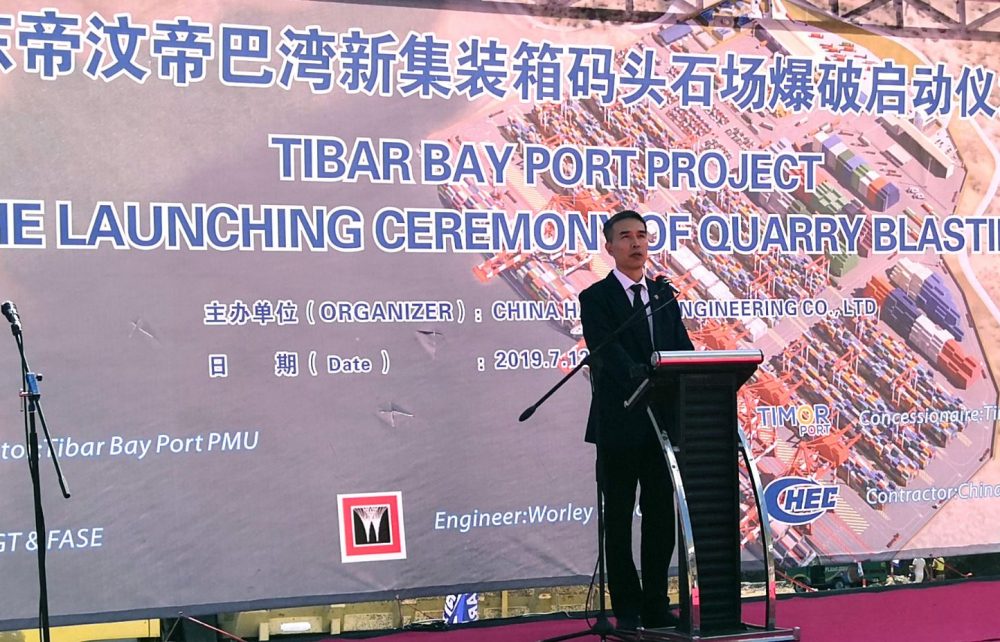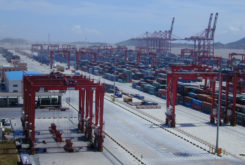On 30 August, Timor-Leste celebrated the 20th anniversary of the referendum that eventually led to independence from Indonesia in 2002. Despite the national pride generated by the occasion, the country is still struggling to stabilise the economy and reduce poverty levels.
Efforts to diversify the economy will take many years to bear fruit, so the country’s fate is closely tied to the development of the Greater Sunrise LNG scheme, with China looking the most likely source of investment. Although recent reports that Beijing had already agreed to finance the scheme in its entirety appear to be untrue, China Civil Engineering Construction is already involved in the project.
The Indonesian occupation from 1975 and subsequent independence war cost between 100,000 and 250,000 lives and devastated national infrastructure. Despite the revenues from the Bayu Undan gas-condensate field, about 40% of the population of 1.2 million still live below the poverty line. Tourism and agriculture, including increased coffee cultivation, could help to diversify the economy in the long term yet Timor-Leste will remain dangerously dependent on hydrocarbon revenues for the foreseeable future.
An analyst at La’o Hamutuk – the Timor-Leste Institute for Development Monitoring and Analysis – Berta Antonieta said: “The costs of Greater Sunrise will outweigh its benefits, and that’s already happening because the government is focusing the nation’s attention and funds on the project at the expense of developing other industries, like agriculture and tourism.”
This is particularly concerning because gas from Bayu Undan is due to run out sometime between 2022 and 2024. Greater Sunrise could more than makeup for the lost revenues but there is still a great deal of doubt over whether the scheme will actually be developed. The government has taken a huge, although well-intentioned, gamble that Greater Sunrise gas should be piped onshore Timor-Leste to be turned into LNG for export, rather than south to an existing LNG plant in Australia.
Bayu Undan
The country’s short term revenues were guaranteed at the end of August when it was announced that US firm ConocoPhillips had signed a new production sharing contract (PSC) covering the country’s only existing commercial hydrocarbon project –Bayu Undan. The PSC was required because the maritime boundary agreement struck between Dili and Canberra in March 2018 and finally ratified by Australia in August allocated the field in its entirety to Timor-Leste.
Canberra previously received a 10% share of revenues because the field was deemed to lie within the Timor Sea’s Joint Petroleum Development Area. It is still unclear whether Canberra’s tardiness in taking 17 months to ratify the deal after it was signed was intentional but the delay has allowed Australia to continue to generate income from the venture.
La’o Hamutuk calculates that the country has already lost US$5 billion in revenue to Australia from Bayu Undan. However, according to ConocoPhillips, the Timor-Leste Petroleum Fund has received more than US$20 billion from the project, making it by far the country’s biggest source of income.
Chris Wilson, the president of ConocoPhillips Australia-West, said: “We look forward to the Bayu Undan project operating in Timor-Leste’s maritime jurisdiction and continuing to develop together with Timor-Leste during Bayu Undan’s final years”. Bayu Undan gas is currently piped to ConocoPhillips’ own Darwin LNG plant in the Northern Territory.
The US firm had hoped that gas from Greater Sunrise could be piped to Darwin, making use of the existing pipeline. However, Dili’s insistence that the Greater Sunrise gas be processed into LNG on Timorese territory ended that possibility, so Darwin LNG will now be fed by Australia’s Barossa field.
As discussed previously on CLBrief, ConocoPhillips and Shell pulled out of the venture because of Dili’s insistence that the gas be liquefied onshore in Timor-Leste. The Timorese government now has a 56.6% stake in the development consortium, alongside Australia’s Woodside Petroleum (33.4%) and Japan’s Osaka Gas (10%), but it has been suggested in the Australian press that Woodside will only be interested in investing in the project’s upstream side – in the gas fields themselves – leaving Timor-Leste to finance development of the LNG plant and the pipeline from the fields to the plant.
Dili is determined not to tap the Petroleum Fund to finance the project, as this would virtually empty it, but leaves it needing to borrow what will be a huge sum by any standards. International lenders may be very reluctant to back the scheme without any experienced LNG developers on board. Although it is possible that Dili could secure the services of non-equity partners with the necessary expertise, this is not a common option in the LNG industry. Lenders may also be deterred by the fact that the pipeline will have to cross the 3,300 metre Timor Trough, which separates the gas fields from the island. This will be a testing challenge for even the most experienced engineers.
In an interview with This Week in Asia, Timorese Foreign Minister Dionísio da Costa Babo Soares said: “Timor-Leste is calculating the different values presented in the market and will make the decision about our partners without jeopardising our own economy”. He added, “We are looking at different options, different companies from different countries; not only in China, but also in Australia, the US, Europe and Asia.”
Chinese investment
It had been reported that China’s Export-Import Bank had agreed to lend US$16 billion to Dili to finance its share of Greater Sunrise. However, da Costa Babo Soares said in August that this was a hoax “blown up by politically motivated people around the region”. There have already been scare stories in the regional press that Beijing is likely to take economic control of the country based on the size of existing Chinese investment in the country.
The Australian government and some in the West are concerned that China could make use of perceived economic influence over Timor-Leste and other countries in the region to build military bases. Yet Timorese Nobel Peace Prize winner José Manuel Ramos-Horta says that there should be more concern about Chinese involvement in Australia than in Timor-Leste.
Canberra has attempted to improve relations with Dili, which were tarnished by spying allegations in particular. Australian Prime Minister Scott Morrison attended the anniversary celebrations and has offered aid that includes high-speed internet investment, two new patrol boats and the redevelopment of a naval base. The aid package seems part of a wider diplomatic initiative across the region that includes similar investment in the Solomon Islands and Papua New Guinea, as Canberra seeks to counter Chinese influence.
Chinese companies are working on a wide range of projects in Timor-Leste, building the Presidential Palace, new roads and power transmission infrastructure. In addition, China Harbour Engineering Company is building the US$490 million Tibar Bay Port near Dili, which will be operated by the French firm Bolloré.
Da Costa Babo Soares said that the government needs significantly less than the US$16 billion quoted. The national oil company of Timor-Leste, Timor Gap, puts the figure at US$12 billion, although this may not include the cost of developing a petrochemical plant to be supplied with feedstock by Greater Sunrise.
Chinese LNG demand
Despite the denial, there is no doubt that Beijing is the most likely suitor for the project. While Western banks may be reluctant to bankroll Dili’s ambition, Exim Bank has a track record of supporting infrastructural projects that have geopolitical advantages in addition to any commercial considerations. At the same time, China’s LNG consumption is skyrocketing.
Its imports increased from 37.8 million tonnes in 2017 to 54 million tonnes last year, and it could eventually overtake the world’s biggest market, Japan. The latter imported 82.8 million tonnes last year, while China’s 21 import terminals will have re-gasification capacity of 80 million tonnes a year by the end of 2020.
Companies active in the Chinese LNG industry have asked for Beijing’s help in ensuring imports in the face of any unspecified future ban on shipments to China. Production from projects bankrolled by China would certainly help to guarantee supplies.
In April, Timor Gap awarded a US$943 million contract to state-owned China Civil Engineering Construction to build the LNG offloading terminal at Timor-Leste’s LNG plant, which is to be built at Beaço on the south coast of the island.
Politicians from the two countries have met to discuss other aspects of cooperation on the project and other matters. Da Costa Babo Soares met with Chinese Foreign Minister Wang Yi in Bangkok in August. Wang said that China-backed Timor-Leste’s application to join the Association of Southeast Asian Nations (ASEAN). Dili applied to join in 2011 but remains the only country in the region outside the block.
As ever, the big risk is what will happen if the government cannot secure financing for Greater Sunrise. There is no chance that it will come on stream before Bayu Undan runs out, so even if it is developed, the only question is how many years the Petroleum Fund, which contained US$15.8 billion at the end of 2018, will have to bridge the gap. Dili’s determination over hosting the LNG project could bring industrial and economic development to the country but it could also prove its economic undoing.




